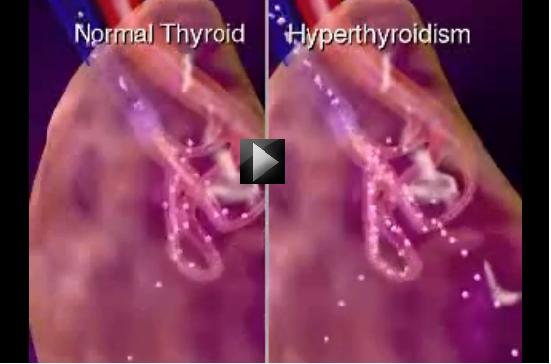Thyroid
Thyroid
Understanding the thyroid
Thyroid is a small gland, shaped like a butterfly, that rests in the middle of the lower neck. Its primary function is to control the body’s metabolism (rate at which cells perform duties essential to living). To control metabolism, the thyroid produces hormones, which tell the body’s cells how much energy to use.
A properly functioning thyroid will maintain the right amount of hormones needed to keep the body’s metabolism functioning at a satisfactory rate. As the hormones are used, the thyroid creates replacements. The quantity of thyroid hormones in the bloodstream is monitored and controlled by the pituitary gland. When the pituitary gland, which is located in the center of the skull below the brain, senses either a lack of thyroid hormones or a high level of thyroid hormones, it will adjust its own hormone (TSH) and send it to the thyroid to tell it what to do.
What is thyroid disease and whom does it affect?
When the thyroid produces too much hormone, the body uses energy faster than it should. This condition is called hyperthyroidism. When the thyroid doesn’t produce enough hormone, the body uses energy slower than it should. This condition is called hypothyroidism.
People of all ages can get thyroid disease. However, women are five to eight times more likely than men to have thyroid problems.
What causes thyroid disease?
There are several different causes of thyroid disease.
The following conditions cause hypothyroidism:
- Thyroiditis is an inflammation of the thyroid gland. This can lower the amount of hormones produced.
- Hashimoto’s thyroiditis is a painless disease of the immune system that is hereditary.
- Postpartum thyroiditis occurs in 5 percent to 9 percent of women after giving birth. It is usually a temporary condition.
- Iodine deficiency is a problem affecting approximately 100 million people around the world. Iodine is used by the thyroid to produce hormones.
- A non-functioning thyroid gland affects one in 4,000 newborns. If the problem isn’t corrected, the child will be physically and mentally retarded..
The following conditions cause hyperthyroidism:
- With Graves’ disease, the entire thyroid gland might be overactive and produce too much hormone.
- Nodules might be overactive within the thyroid.
- Thyroiditis, a disorder that can be painful or painless, can also release hormones that were stored in the thyroid gland causing hyperthyroidism for a few weeks or months. The painless variety occurs most frequently in women after childbirth.
- Excessive iodine is found in a number of drugs and might cause the thyroid to produce either too much or too little hormone in some individuals
What are the symptoms of hypothyroidism and hyperthyroidism?
The following are symptoms for hypothyroidism:
- Fatigue
- Frequent, heavy menstrual periods
- Forgetfulness
- Weight gain
- Dry, coarse skin and hair
- Hoarse voice
- Intolerance to cold
The following are symptoms for hyperthyroidism:
- Irritability/nervousness
- Muscle weakness/tremors
- Infrequent, scant menstrual periods
- Weight loss
- Sleep disturbances
- Enlarged thyroid gland
- Vision problems or eye irritation
- Heat sensitivity
When thyroid disease is caught early, treatment can control the disorder even before the onset of symptoms. Thyroid diseases are life-long conditions. With careful management, people with thyroid disease can live healthy, normal lives.
Fluoride in Water and hypothyroidism
According to the researchers at the University of Kent, water fluoridation above a certain level is linked to 30 percent higher than expected rates of underactive thyroid, and high hypothyroidism, which can lead to weight gain and depression. The study has been published online in the Journal of Epidemiology and Community Health.
Related resources
Last Modified : 2/12/2020
This topic deals with information related to Fever...
The topic covers aspects related to nutrition tran...
This topic covers the treatment options for Celiac...
This topic deals with information related to Ulcer

